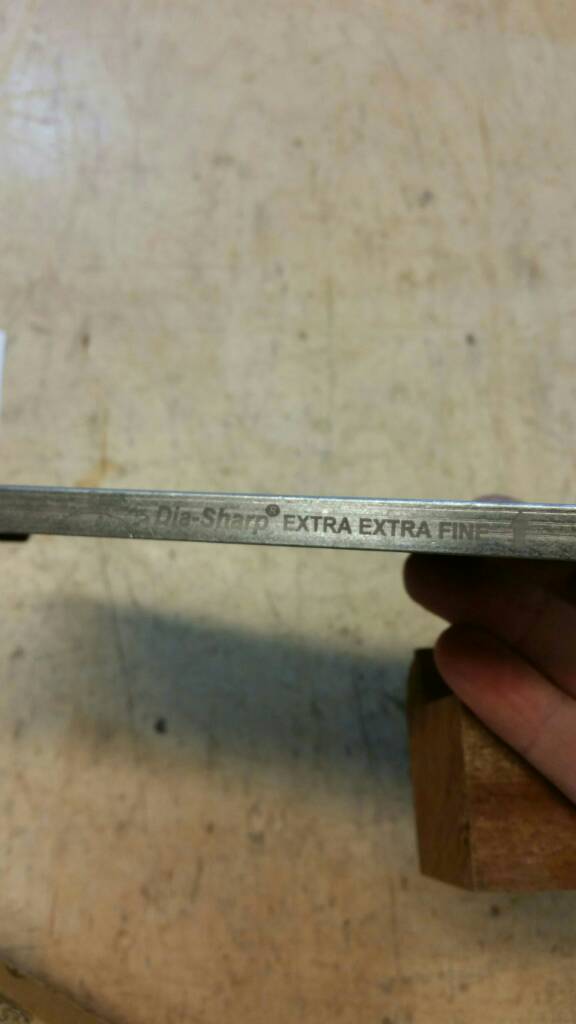E-wan":3gueom76 said:
I'm curious about the scary sharp paper. At what point in the sharpening process does it tend to be used? Is it an alternative to a strop?
With my limited knowledge and experience I would have thought that the time spent sticking down paper and the risk of tearing it would put off somebody using it as part of a professional sharpening routine.
Yes, broadly speaking the scary sharp paper does exactly the same job as a strop. It's down to individual choices, but personally I prefer scary sharp paper to a strop, however I know some excellent craftsmen who think otherwise. So whatever you choose you'll be in great company!
Here's my sharpening set up,
I use a grinder or a linisher
frequently. If it takes longer than about ten or twelve strokes to raise a burr then the tool gets a little tickle with the linisher, so that the ground bevel is always well within 1mm of the cutting edge. Because I don't grind right to the cutting edge there's never any risk of bluing the steel. As a rough rule of thumb I'll normally grind after every seven or eight sharpenings, it takes seconds but it saves minutes. In the case of really thick irons and chisels it saves a great deal of minutes!
Sharpening takes place on diamond stones using water as a lubricant throughout, mixing different lubricants slows you down and risks contamination. I normally start with a 600 grit stone. As soon as a burr has been raised
right around the cutting edge, then I lift the tool a fraction and hone on a 1200 grit stone.
Then the tool goes onto the pink scary sharp paper at the same angle as on the 1200 stone and is polished. If it's a critical job this might be repeated on the pale green paper which is a still finer grit. The tool is then flipped over and the burr is removed on pink or green scary sharp paper. To be honest most tools work adequately well straight off the 1200 grit stone, but you can't polish with 1200 grit, and a big advantage of polishing is that it allows you to check visually that the
entire cutting edge, from one corner to the other, has all been properly sharpened. It's surprising how easy it is to miss a bit. If you want to use a honing guide that's okay, unless you're sharpening regularly you'll probably be faster and more accurate with a simple, cheap honing guide like the Eclipse. I'm seeing more and more professionals using honing guides, there's certainly no shame in using one if that's what you prefer.
The entire job takes about a minute.
I'm sharpening at least five days a week. I'd expect to change the scary sharp paper maybe every second month. I take a lot of care to avoid getting dust trapped underneath so it's probably a twenty minute job. I once worked in a workshop where four to six craftsmen shared each sharpening station, because no one wanted to change the scary sharp paper it might remain in place for up to three months. That was a bit daft as by then it was well past it's sell by date, but it shows how long it can last if you're stubborn!
The keys to successful sharpening in my view are 1) check you've raised a burr right around the edge, 2) check you've produced a mirror polish right around the edge, 3) grind frequently so that a power tool's doing all the hard work in the sharpening process, 4) have a permanent sharpening station in your workshop, or if that's impossible have your sharpening kit ready laid out on a tray and all ready to go.




































